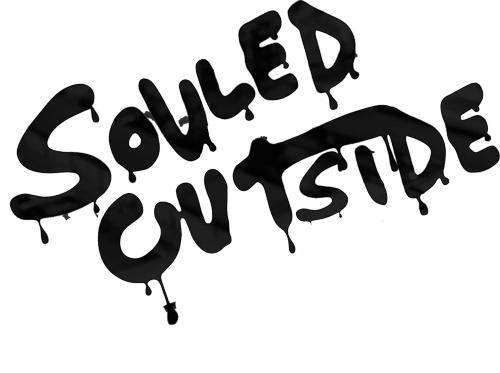“You’ve learned a lot in the past week. Now, we think it’s time you put that knowledge to use with one final test.” Rico, our guide, raised a glass. “You’re going to be making your own cosmo. None of that red sh*t they show on HBO—a proper cosmo.” We could see a dusting of snow begin to blanket the city through the window as we readied ourselves for the trial.
There’s really nothing difficult about making a cosmo, or most other cocktails for that matter. The main trick is to begin. Many people never really try. They sit back, bark an order, and watch a bartender put on a magic show behind the counter. To be fair, there are some fantastic and gifted bartenders; but you can often achieve the same results—with a little less flair and a little more time—on your own.
One part vodka. Two parts triple sec. A little lime juice. A half part of cranberry juice. A shaker full of ice, mixed until condensation begins to appear on its surface. Add a carefully sliced bit of orange peel with a squeeze, then you’re done.
“I’d pay for that,” nodded Rico, Absolut Vodka’s marketing man of mystery. “Well done.”
One by one, our group of a dozen or so writers and content creators passed Rico’s test. It was the culmination of what we’d come to Sweden to do: learn about Absolut’s vodka making process from wheat fields to weekend nights. In between, we’d visited farms in villages small enough to make the Mississippi Delta blush before arriving in Scandinavia’s largest city, Stockholm, for our final trial.

I can’t tell you what others took away from the trip, but I can tell you what I did.
It starts in the grave.
A few miles away from Absolut’s Stockholm offices, you’ll find the fossilized corpses from the ill-fated warship, Vassa. They rest in open tombs, their bones sinking slightly into beds of black sand beside the great ship where their final moments took place. Just a few feet away, the 400 year old carcass of the Vassa hovers over the browning, hollow expressions left on their skulls.
15 souls rest inside a covered atrium beside the Vassa; two women, and thirteen men. They are remnants of a maiden voyage that lasted just 1300 meters before the top heavy warship caught a strong wind and sank in Stockholm’s harbor. For 333 years, the ship and its crew faded from history and into myth before the wreck was rediscovered and razed in the 1980’s.
Their humanity stuck me like a freight train to the chest.
We never know when we’re going to stop living. The decision is not up to us. People die in unexpected incidents every minute of every hour of everyday. The two women onboard Vassa were meant to be dropped off at the next port, perhaps guests of high ranking members of the crew. The sailors themselves led normal lives. For them, Vassa was not a relic, but a job.
Some of the men were found still at their posts with muskets alongside. One couple was found holding hands near a staircase.
Perhaps they were trying to get out.
Now, they are frozen in time.
We never know when we’re going to stop living, but we can make the choice of when to start feeling alive.
As I stepped away from the Vassa, leaving its timbers and its crew behind, I took a walk along Stockholm’s famous harbor. Wedged on a stone sidewalk between city and ships, I wondered as hundreds of busy people hurried by.
They went past on scooters, on skateboard, and on their own two feet. They stopped here and there for a hot dog, for ice cream, or a picture under the bluebird sky. But my thoughts were far away on the stacks of riddled bones in my shadow, on the mountain tops of the Sierra Nevadas, in the seat of an old car and a lonesome highway in the summer night.
What will you see when you die? Will it be a flash? A mountaintop? A memory? A familiar set of eyes?
For me, the answer will be a hundred different places and a hundred different eyes.
When I accepted an invitation to come to Sweden, I knew the price: a free flight for a few days of on-brand education. As the trip comes to a close, I’m thankful for the opportunity.
The reality for most travel writers is a practical one. Very few outlets pay for writers to experience places on their own. This leaves the actual travel and learning up to people who are willing to either fund expeditions themselves or accept trips from brands. In basic terms, it’s a sort of symbiotic relationship that allows writers—who are, as a rule, poorly paid—and brands—who are, as a rule, looking for marketing—to scratch each other’s backs. At Souled Outside, our mission is to see as much of the world as possible and report back to you in first hand experiences from the field. And so, we fund our own expeditions where possible and accept other oportunities if they’re a fit for our goals and beliefs.
Writers retain some leverage here. If a brand truly sucks, it’s not going to be written about positively. If they are dastardly, they won’t get a visit from us at all. Still, every now and then, if a company really hits the mark, they’re going to get some extra love. By sponsoring gender equality efforts around the globe, creating a carbon neutral manufacturing process, and condemning hate messaging on an international level, Absolut checks those boxes for me.
A few minutes after our cosmo’s were through, Rico rolled into another part of the Absolut offices on top of a drink cart. Everybody laughed. Everybody danced. Nobody felt alone.
Miles away, staring in the face of death, I was reminded of that brief moment of truly being alive.
In Stockholm, I was reminded—we never know when we’re going to stop living, but it’s never too late to feel alive.
Souled Out Sites in Stockholm
- The Vassa Museum houses the wreckage of the 17th century warship, Vassa. It set sail in 1628 and immediately met an untimely demise.
- Fotografiska is a must-see for photographers. The photography museum houses multiple collections of exceptional photography and insight.
- Fishing is encouraged in Stockholm. I saw numerous locals casting a line from the sidewalk for salmon and trout. No license is required.
- The Nobel Prize Museum is located in Stockholm, and it’s worth a visit if current news has you down.
- Learn more about Swedish vodka at the Stockholm Spirits Museum, which pairs well with a cosmo, or a vodka soda with a splash of lime.
- Check out TAF, a rooftop bar with unmatched views of the city.
- SouledOut used the Hobo Hotel as a basecamp in Stockholm. Rates hover just over $100 per night, though Americans will be pleasantly surprised with the high end details and thoughtful touches that Hobo provides for those staying overnight.
















